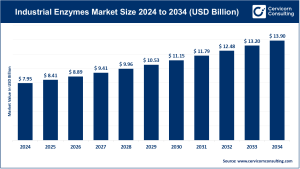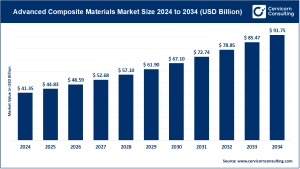Market Overview
The global ferro alloys market was valued at approximately USD 58.17 billion in 2024 and is expected to climb to nearly USD 121.69 billion by 2034, reflecting a CAGR of 7.66% between 2025 and 2034. Ferro alloys—including key materials such as ferrosilicon, ferromanganese, and ferrochromium—are vital in enhancing the mechanical properties, durability, and strength of steel and cast iron. With more than 80% of global ferro alloy demand tied to the steel sector, market dynamics are closely linked to industrial growth, infrastructure investment, and renewable energy development.
Get a Free Sample
Key Market Trends
- Shift Toward Low-Carbon and Energy-Efficient Alloys
Global sustainability goals are accelerating the transition to low-carbon ferro alloys and eco-friendly smelting methods. Advanced technologies such as plasma arc and renewable-powered electric furnaces are emerging to lower emissions and boost energy efficiency. Countries like Sweden and Japan are leading the “green steel” revolution, creating growing demand for sustainable alloy inputs. - Digital Transformation in Smelting Processes
The introduction of AI-driven control systems and IoT-enabled furnace monitoring is modernizing alloy manufacturing. Smart automation and predictive maintenance reduce downtime, enhance yield, and improve alloy consistency. Producers across India and China are adopting digital furnace technology to elevate operational efficiency. - Rising Consumption in Infrastructure and Automotive Sectors
Infrastructure expansion across Asia-Pacific and the Middle East has sharply increased steel and alloy demand. High-strength, lightweight steels—crucial for vehicle manufacturing—depend on manganese and chromium-based alloys to deliver performance, corrosion resistance, and safety. - Sustainability Regulations and Recycling Initiatives
Stricter global mining regulations are prompting increased recycling of ferro alloy slag and scrap. The EU, U.S., and Asian governments are fostering circular economy practices to improve resource utilization and environmental compliance. - Production Growth in Emerging Economies
Nations such as India, Indonesia, and Malaysia are expanding domestic ferro alloy capacity, leveraging raw material availability and industrial incentives. India alone contributes over 10% of global ferro alloy output, supported by the government’s “Make in India” initiative.
Market Drivers
- Expanding Steel Production
With global crude steel output exceeding 1.8 billion tons annually, ferro alloys remain indispensable. The World Steel Association anticipates steady 2–3% annual growth in steel demand, ensuring sustained ferro alloy consumption across industrial and construction sectors. - Infrastructure Investments
Large-scale projects under India’s National Infrastructure Pipeline and the U.S. Infrastructure Investment and Jobs Act continue to propel steel and alloy usage. Asia-Pacific, accounting for roughly 65% of global consumption, remains the largest regional market. - Technological Innovations in Smelting
Emerging refining techniques—such as oxygen bottom-blowing and vacuum decarburization—enhance alloy purity, reduce waste, and cut energy use, supporting both economic and environmental objectives. - Rising Specialty and Stainless Steel Demand
Growing stainless steel use in construction, consumer goods, and chemicals drives the ferrochromium segment. This trend is particularly pronounced in China and South Korea, where advanced metallurgy is accelerating adoption.
Impact of Trends and Drivers
- Regional Impact: Asia-Pacific leads global production and consumption, while Europe advances in recycled and green alloy technologies.
- Application Impact: Infrastructure-grade alloys are in high demand for construction, while specialty alloys are expanding across automotive, aerospace, and renewable energy uses.
- Technological Impact: AI and automation enhance efficiency and reduce production costs, improving competitiveness for key producers.
Challenges and Opportunities
Challenges:
- Volatile raw material prices (chrome, manganese ores)
- High energy costs and emission regulations
- Geopolitical supply chain uncertainties
Opportunities:
- Development of low-emission and recycled alloy technologies
- Strategic collaborations with steelmakers for integrated operations
- Expanding alloy demand in renewable energy infrastructure (e.g., wind turbines)
Future Outlook
The ferro alloys market is poised for sustained growth, projected to reach nearly USD 121.69 billion by 2034. With a strong 7.66% CAGR, the industry’s evolution will be shaped by automation, green metallurgy, and circular economy practices. As nations invest in infrastructure and clean technologies, ferro alloys will remain a cornerstone of the global industrial supply chain.

